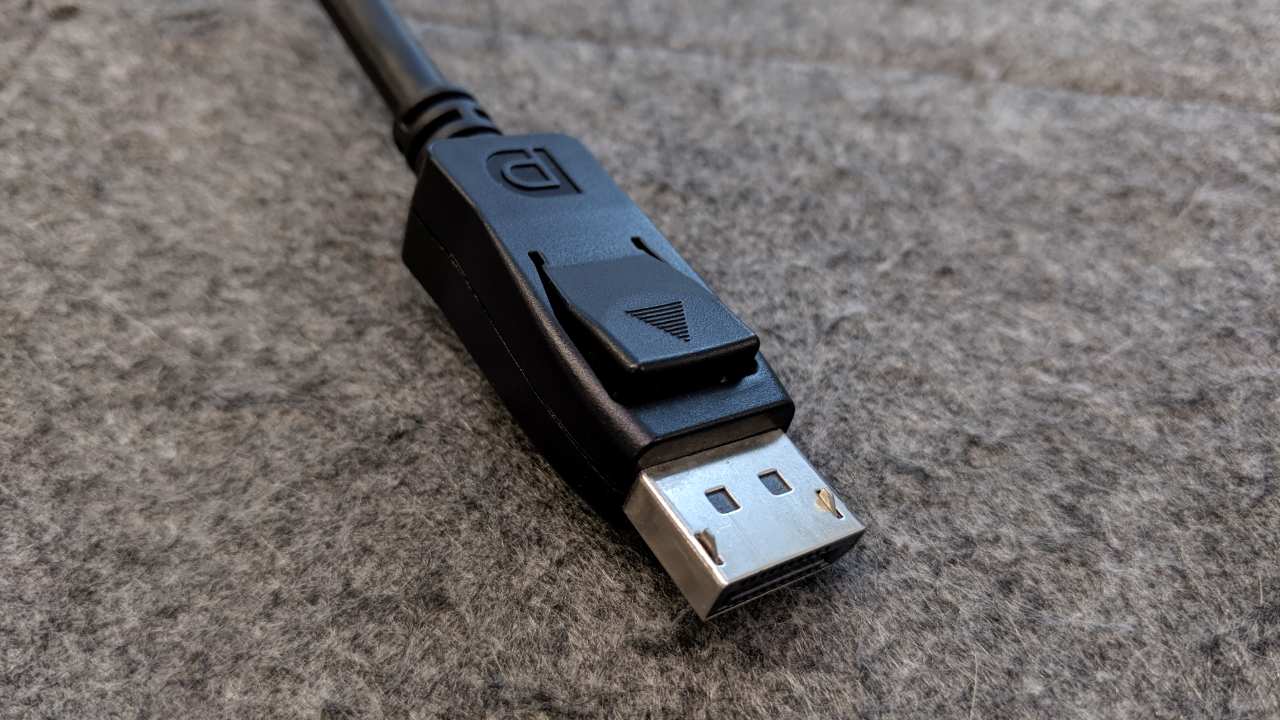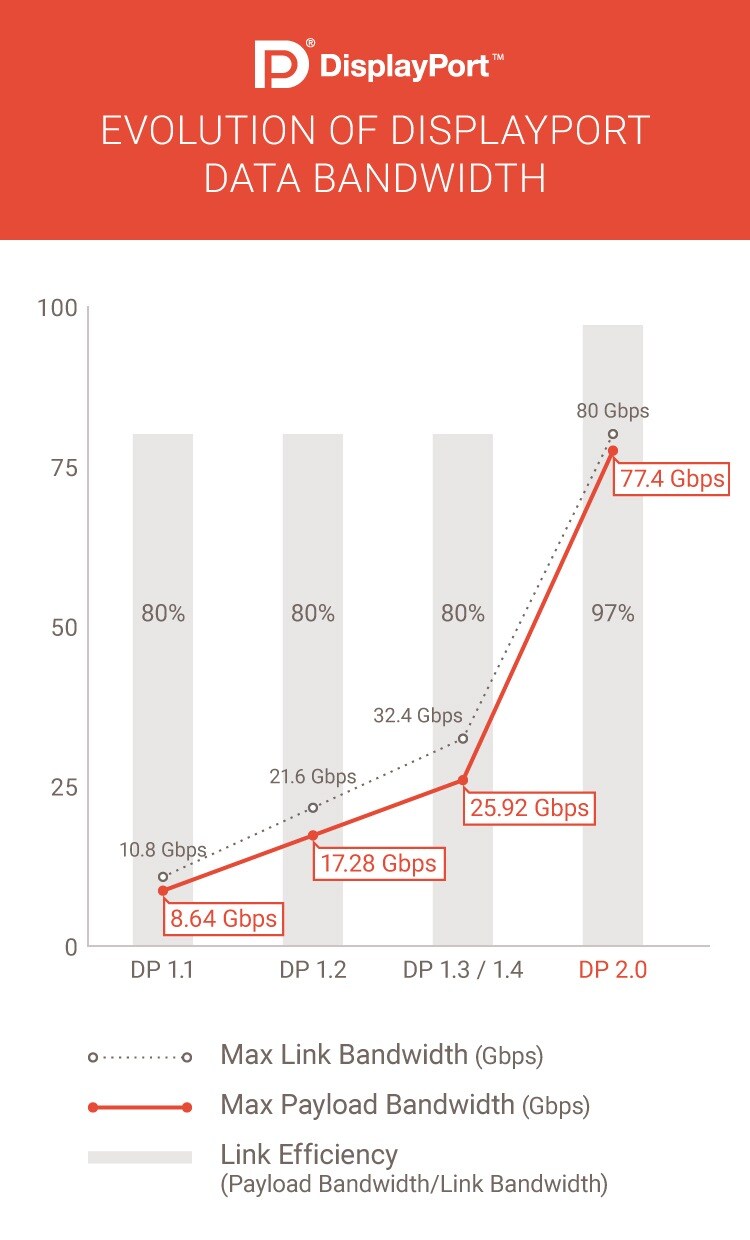Display standards don’t get frequently updated but when they do, it’s considerably huge. The Video Electronics Standards Association (VESA) has revealed the specifications of DisplayPort 2.0 that now triples the bandwidth of the current DisplayPort 1.3 and 1.4 standards. It will now support 8K resolution monitors and beyond, higher refresh rates and HDR support at higher resolutions. [caption id=“attachment_6891661” align=“alignnone” width=“1280”]  DisplayPort 1.4. Image: Abhijit Dey/tech2.[/caption] According to the specifications of the current DisplayPort 1.3 and 1.4 standards, they have a maximum raw bandwidth of 32.4 Gbps but an effective bandwidth of 25.92 Gbps across four lanes. It can support 4K resolution monitors at 120 Hz refresh rate. DisplayPort 2.0 comes with a raw maximum bandwidth of 80 Gbps and an effective bandwidth of 77.37 Gbps, triple to what is offered by DisplayPort 1.3 and 1.4. It will be able to support 8K monitors at 60 Hz. The configuration examples listed down by VESA are as follows. Single display resolutions
- One 16K (15360×8460) display @60Hz and 30 bpp 4:4:4 HDR (with DSC)
- One 10K (10240×4320) display @60Hz and 24 bpp 4:4:4 (no compression)
Dual display resolutions
- Two 8K (7680×4320) displays @120Hz and 30 bpp 4:4:4 HDR (with DSC)
- Two 4K (3840×2160) displays @144Hz and 24 bpp 4:4:4 (no compression)
Triple display resolutions
- Three 10K (10240×4320) displays @60Hz and 30 bpp 4:4:4 HDR (with DSC)
- Three 4K (3840×2160) displays @90Hz and 30 bpp 4:4:4 HDR (no compression)
When using only two lanes on the USB-C connector via DP Alt Mode to allow for simultaneous SuperSpeed USB data and video, DP 2.0 can enable such configurations as:
- Three 4K (3840×2160) displays @144Hz and 30 bpp 4:4:4 HDR (with DSC)
- Two 4Kx4K (4096×4096) displays (for AR/VR headsets) @120Hz and 30 bpp 4:4:4 HDR (with DSC)
- Three QHD (2560×1440) @120Hz and 24 bpp 4:4:4 (no compression)
- One 8K (7680×4320) display @30Hz and 30 bpp 4:4:4 HDR (no compression)
[caption id=“attachment_6891991” align=“alignnone” width=“750”]  VESA DisplayPort 2.0 Chart. Image: Displayport.org[/caption] The new DisplayPort 2.0 standard will continue using the same DisplayPort connector interface with new support over the USB-C interface. It also has a new Panel Replay capability that improves power efficiency by optimising power and thermal performance. An advantage of this technology is being able to recharge devices more quickly while simultaneously using them. Although the specifications might sound like a lot, it won’t be enough for the upcoming Apple Pro Display XDR 6K resolution monitor and 8K monitors in the future. The Japan Broadcasting Company (NHK) is planning to broadcast the 2020 Summer Olympics in 8K. Video games can scale to higher resolutions based on the capability of the graphics hardware and having so much bandwidth makes it easier to use high resolution monitors.


)
)
)
)
)
)
)
)
)



